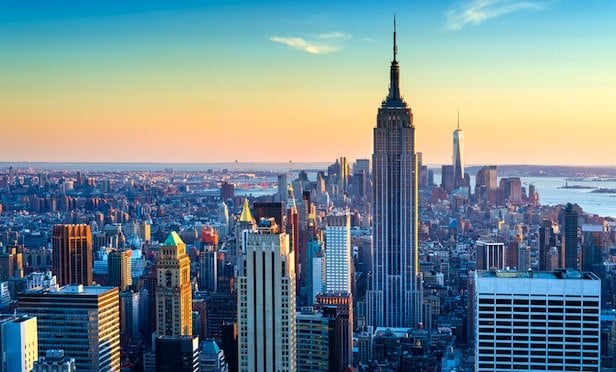 New York City
New York City
NEW YORK CITY—“In my 20 years of tracking NYC real estate, I never thought I'd be saying Midtown South rents are the highest in the nation but it did happen in 2018,” said Rich Persichetti, VP, tri-state region research lead at Cushman & Wakefield. At $95.80 per square foot, they were almost 17% higher than in Midtown. However, he clarified that the building stock in Midtown is eight times greater than in Midtown South. Persichetti pointed to the high demand, lack of available supply and newly built construction projects bearing triple digit rents for boosting the district's statistical average.
During a press conference call, in which Cushman & Wakefield presented its research, Persichetti said last year was the strongest leasing year on record for Manhattan office demand. Although Manhattan's vacancy rose to 9.2%, he underscored it has been well below 10% for more than four years.
Downtown experienced a significant hike in vacancy. Three World Trade Center opened with about 1.5 million square feet coming onto the market vacant.
Manhattan hit a record high of 35.9 million square feet leased, up 18% year-over-year from 2017. Combined with renewals, last year experienced 42.2 million square feet of leasing activity. Midtown's leasing 23.7 million square feet was 40% above its historical average and Midtown South showed a robust 39% increase. Lease renewals dropped last year by about 30% as tenants continued to “trade up” in office space and to receive historically high concession packages.
Tenants markedly also went for large spaces. Last year, tenants signed onto 61 leases greater than 100,000 square feet. Historically, New York City has averaged annually 11 deals in the 250,000 square feet or greater range. But for the last two years, there were 22 and 21 deals in this size range.
Again Downtown was a bit of the little sibling straggling behind, posting a year-over-year decline in leasing. Persichetti attributed this to the lack of Lower Manhattan's large deals and last year only seeing five new leases for space exceeding 100,000 square feet. In 2017, Lower Manhattan saw 10 such leases.
As the average office building is 85 years old in Manhattan, Persichetti stated the 4.7 million square feet of new product delivered last year was highly needed. Cushman & Wakefield has recorded potential for another 22.5 million square feet of development over the next five years. There are currently 14.5 million square feet under construction in Midtown's pipeline, alone. He pointed out that this exceeds the next three cities: San Jose, Chicago and San Mateo—combined.
Ken McCarthy, principal economist and Americas head of applied research at the brokerage, reported strong economic numbers. He stated New York City reached a record high in total employment. For 2018 through November, Cushman & Wakefield pointed out that the city added more than 67,000 jobs. In private industries, the health, education, leisure and hospitality areas showed strong performances.
A booming economy means more jobs, which require more offices. McCarthy pointed out that the city is well above the national average, when it comes to the percentage of the labor force having a bachelor's degree. Although not as high as in Silicon Valley or Washington, DC., he said these numbers in the city's talent pool still attracts TAMI and financial services companies. Plus, it's a hipster city. New York City has the second highest percentage of millennials, eclipsed only by Austin. Finally, Cushman & Wakefield's researchers found in 2018 a record amount of venture capital helped foster start-ups and an entrepreneurial culture.
McCarthy summed up the findings. “New York continues to be a highly attractive location for corporations to locate, a highly attractive place to live for millennials,” he said. “As the number of employed people rise to record levels, that's obviously a very positive thing for the commercial office market.”
© Touchpoint Markets, All Rights Reserved. Request academic re-use from www.copyright.com. All other uses, submit a request to [email protected]. For more inforrmation visit Asset & Logo Licensing.







